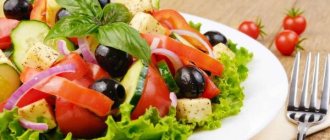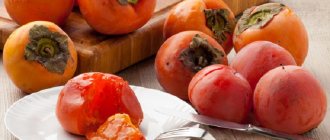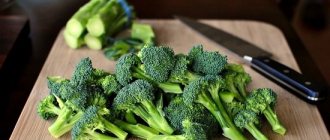Any form of damage to the gastric mucosa is an indication for following a diet in combination with drug therapy. Patients are often advised to eat boiled, steamed, or baked vegetables. One of the leaders is zucchini for gastritis, due to its rich vitamin and mineral composition, easy digestion, and low calorie content.
Plant foods should be in every person's diet. In the absence of fruits and vegetables in the diet, the likelihood of diseases of the digestive system, as well as decreased immunity, increases. However, if the pathology has already made itself felt, then the first aid will be a therapeutic diet. Zucchini will be of particular benefit to humans for gastritis and other inflammations in the gastrointestinal tract.
Pathological disorders in the functioning of the digestive tract can be cured using a set of measures. Therapy is aimed at restoring damaged mucous membranes, as well as increasing the level of vitamins and minerals in the body. Vegetable dishes cope with this task in the best possible way without damaging the walls of the stomach and intestines.
Zucchini for health
The tender fruit is rich in dietary fiber and low in calories - only 24 kcal. It has an adsorbent effect, collecting toxins, waste and undigested food. Decomposition products, thanks to zucchini fiber, are easily eliminated from the body. A special feature of this vegetable is the absence of symptoms of flatulence, constipation and diarrhea after eating zucchini dishes.
The mineral composition of the fruit replenishes the body with trace elements (calcium, potassium, iron, magnesium), as well as vitamins (C, A, PP, H, B1, B2, B3, B6, B9). Thanks to these components, the following changes occur:
- the condition of the skin improves, its elasticity and tone increase;
- collagen production increases;
- the heart rhythm is normalized, as well as the functioning of the liver and brain;
- muscle tissue is strengthened;
- The body's defenses increase.
The uniqueness of zucchini fruits is that, along with its high water content (95%), it, on the contrary, removes excess liquid from the body. Thus, this is an indispensable product for those losing weight in the fight against cellulite. In addition, it effectively cleanses and restores the liver in case of alcohol poisoning and abuse of fatty foods.
Zucchini contains natural antioxidants that prevent premature aging.
Useful video
Watch a video about squash caviar and learn about its effect on human health, and also check out another option for preparing this snack.
Due to the low calorie content of zucchini (24 kcal per 100 grams), the vegetable is successfully used in the menu of obese patients. The ability to remove salt and water helps to cope with swelling if, in addition to gastritis, you have hypertension or kidney disease. Zucchini regulates blood glucose levels, which is important for patients with diabetes.
Another advantage is that zucchini is perfectly stored even in a city apartment. True, this does not apply to white-fruited varieties. But yellow and green fruits wrapped in newsprint can last under your bed in a box for up to 5 months if you arrange them in a single layer.
Pros and cons of the fetus with gastrointestinal diseases
Gastroenterologists consider zucchini a useful vegetable for pathologies of the gastrointestinal tract. The pulp of the fruit that has undergone heat treatment contains a small amount of fats and acids of organic origin. This has a beneficial effect on the parietal cells of the stomach and does not lead to disruption of the secretion of its secretions.
Dishes from zucchini for gastritis with high or low acidity are included in the therapeutic diet of patients. However, in its raw form, the fruit is strictly contraindicated for consumption, since the fibers of the fresh vegetable can harm the inflamed mucous membrane. Therefore, it is very important to prepare zucchini correctly, following the dietary recommendations of your doctor.
It is prohibited to introduce pickled or salted vegetables, including zucchini, into the diet of a patient with gastritis. Concentrated brine sharply increases secretory function, which leads to acute pain in the stomach.
With increased acidity
Young fruits have healing properties and do not irritate the gastric mucosa in hyperacid gastritis. Zucchini is not peeled during cooking, as it contains many vitamins.
In dietary nutrition, vegetables are cooked together in the form of a stew. It is stewed zucchini that is most beneficial for the gastrointestinal tract. It is worth considering that the fruits do not contain proteins, so they are combined in the diet with boiled dietary meat or fish.
For pathologies of the stomach, intestines and other organs of the digestive system, fried foods are contraindicated, especially zucchini in batter.
With low acidity
With weak secretory function of the stomach, solid food can harm the inflamed mucosa. In this case, nutrition is aimed at mechanically sparing the walls of the digestive organs. But at the same time, it must have a stimulating property for the production of gastric juice.
Eating zucchini for hypoacid gastritis is allowed in a ready-made dish. It is not recommended to use them raw or fried. Fruits can be boiled, baked and stewed. Vegetables processed in this way will retain all their beneficial properties.
For ulcers
At the time of exacerbation of diseases of the digestive system, a strict diet is observed. Only pureed, well-cooked foods (porridge, soups) are allowed. Vegetables are not recommended in the acute period, and the use of zucchini for stomach ulcers and atrophic gastritis, like other pumpkins, is completely prohibited. When restoring the digestive process, all coarse fibrous foods with a high fiber content are excluded.
Zucchini is healthy and quite harmless. However, in case of ulcerative pathology of the digestive tract, they should be included in the diet only during a period of stable remission.
Doctors' opinion - is it possible or not?
Nutritionists and gastroenterologists recommend zucchini for gastritis, making some exceptions, here they are:
- Acute gastritis is an absolute contraindication for eating pumpkin. By the way, in this situation any food is prohibited; the patient must refrain from eating until the pain subsides. They begin to restore the diet with slimy soups and liquid porridges, but not with vegetables.
- If you are an adherent of a raw food diet, but suffer from gastritis, it is better to avoid raw zucchini. A raw vegetable provokes an increase in secretion, and with atrophic gastritis, it injures the already weak mucous membrane.
- Fried zucchini . Doctors prohibit fried foods for any form of gastritis. That's all the medical prohibitions regarding zucchini.
Useful combinations
Zucchini is versatile in that it can be combined with many other vegetables. The most affordable combination of products is stewed caviar, which will improve the functioning of the gastrointestinal tract, relieve swelling, and remove uric acid salts (urates).
Zucchini goes well with the following foods:
- carrot;
- potato;
- eggplant;
- tomatoes;
- meat (poultry, beef);
- chicken eggs;
- hard cheese;
- parsley.
Before preparing zucchini stew, consult your doctor about the permitted combinations to avoid additional stress and irritation of the stomach walls.
Useful combinations
Many children of post-Soviet times are interested in whether it is possible to eat squash caviar for gastritis, because they remember this dish from the days of kindergarten. Yes, this delicate puree-like gruel is healthy and dietary, but it can only be introduced into the patient’s diet in small dosages. It is important to choose a product that contains few preservatives and chemical elements.
Squash caviar is suitable for use by patients with gastritis
Zucchini can be combined with other permitted vegetables. An eggplant dish is such a healthy variation. It has a diuretic effect and relieves the patient of constipation and removes excess urates. Zucchini and eggplant can be stewed, baked or steamed.
Among other products, the patient can cook it with the following variations:
- potato;
- carrot;
- beef;
- chicken meat;
- butter;
- eggs;
- tomatoes;
- parsley;
- hard cheese.
Zucchini can be cooked together with eggplant and tomatoes
It is best to consult a nutritionist before consuming any combination.
How to cook zucchini
Proper preparation of zucchini during a gastrointestinal tract disease is considered an important point in a therapeutic diet. The fruits can be boiled (also steamed), stewed, baked (both in the oven and in a slow cooker), and made into soufflés and purees. However, gastroenterologists prohibit the consumption of fried zucchini by those people who have diseases of the gastrointestinal tract.
For dietary nutrition, choose ripe, young fruits up to 25 cm in length. At the same time, pay attention to the color of the fruit. It should be a soft green shade. In such vegetables, the skin is thin and soft, which is extremely important for stomach pathologies. It is a storehouse of vitamins and minerals!
Pumpkin fruits are very useful in the diet. They help normalize the functioning of the digestive tract. But with erosive manifestations of the disease, they are not recommended to be included in the diet, as they are rich in fiber.
Gastritis and zucchini: tips for consumption and delicious recipes
It is impossible to imagine a diet without a variety of vegetables. Potatoes, tomatoes, cucumbers, cabbage, beets, cooked in various variations make the menu varied and tasty.
Another representative that deserves special mention is the healthy and irreplaceable zucchini. A close relative of pumpkin literally saves the diet from monotony.
Zucchini goes well with meat and fish dishes, and there are so many options for preparing them that even the most picky gourmet will be satisfied. In case of pathologies of the gastrointestinal tract, these vegetables occupy a significant part of the diet, so we decided to tell you how to properly consume zucchini for gastritis.
What is the vegetable rich in?
Zucchini contains microelements and vitamins, which makes the vegetable useful not only for gastritis, but also in the daily diet of a healthy person.
- Vitamin A has a positive effect on the functioning of the immune system, removes free radicals from the body, promotes tissue regeneration, which is of great importance for damaged mucous membranes during gastritis.
- Vitamins B 1 and B 2 are actively involved in the regulation of metabolism, improve digestive activity, and regulate acidity. Like all vitamins of this group, B 1 and B 2 restore damaged nerve fibers, improve visual functions, and strengthen the immune system.
- Vitamin C is an antioxidant that promotes the absorption of iron, helps transport oxygen to tissues, slows down aging, and strengthens defenses.
- Vitamin PP affects hematopoiesis, strengthens the walls of blood vessels, and has a beneficial effect on digestive processes and processes of nervous activity.
- Potassium strengthens the cardiovascular system, normalizes heart rate, and nourishes muscle tissue.
- Calcium is necessary for normal growth of bones and joints.
- Magnesium normalizes intestinal function, is involved in digestion, and is important for the formation of the skeleton and intellectual development.
- Copper promotes the formation of new blood cells.
- Titanium participates in metabolism and promotes hematopoiesis.
The high content of dietary fiber helps intestinal function and normalizes digestion. With regular consumption of zucchini for gastritis, the patient gets rid of nausea and heartburn and does not suffer from constipation. Zucchini also has a mild diuretic effect, removing excess salt and toxins.
It is important to properly prepare and consume zucchini for various forms of gastritis in order to make the most of their rich composition. Let's turn to the recommendations of experts.
Doctors' opinion - is it possible or not?
Nutritionists and gastroenterologists recommend zucchini for gastritis, making some exceptions, here they are:
- Acute gastritis is an absolute contraindication for eating pumpkin. By the way, in this situation any food is prohibited; the patient must refrain from eating until the pain subsides. They begin to restore the diet with slimy soups and liquid porridges, but not with vegetables.
- If you are an adherent of a raw food diet, but suffer from gastritis, it is better to avoid raw zucchini. A raw vegetable provokes an increase in secretion, and with atrophic gastritis, it injures the already weak mucous membrane.
- Fried zucchini . Doctors prohibit fried foods for any form of gastritis. That's all the medical prohibitions regarding zucchini.
Diet recipes
You can cook zucchini in different ways. Fried with garlic, caviar, pancakes, even zucchini cake! Eliminate fried vegetables immediately; they are prohibited for gastritis; opt for other recipes. We offer several cooking options that you will love.
Squash caviar with carrots
A great appetizer dish and not difficult to prepare.
You'll need:
- 1 – 2 medium zucchini,
- half a kilogram of carrots,
- salt,
- vegetable oil.
Cooking method:
Peel the zucchini and chop in a food processor. Grind the carrots in a food processor or grate them onto a fine grater. Place the zucchini and carrot mixture in a saucepan, add a little salt and simmer for 20 minutes. The dish can be used as a salad for gastritis, as well as for an afternoon snack or dinner.
Casserole with tomatoes in the oven
Cut young zucchini into slices and place on a baking sheet. Season with salt and add chopped tomatoes. Fill the baking sheet with low-fat sour cream, sprinkle with grated cheese and herbs. Bake in the oven for 25 minutes. If you want the casserole to be denser, replace the sour cream with white bechamel sauce.
Steam stew
Zucchini, bell peppers, carrots, chop. Add small cauliflower or broccoli florets to the mixture. Place the vegetables in the steamer and set the cooking time to 30 minutes. Salt at the end. The dish turns out very juicy and bright. An excellent side dish for boiled meat, baked fish or poultry.
Pancakes with variations
Zucchini pancakes can be prepared in several ways:
- Chopped zucchini, semolina, egg, salt.
- Chopped zucchini in half with potatoes, semolina, egg, salt.
- Chopped zucchini, chopped boiled meat, egg, salt, flour.
These are options for preparing pancake dough. Knead until the dough resembles thick sour cream. Spoon onto a baking sheet and bake for 15 - 25 minutes. Serve with sour cream or plain low-fat yogurt. An excellent option for dinner with gastritis.
Stuffed “cups”
The dish is truly festive. Cut the zucchini with the peel crosswise into circles 4-5 cm high. Using a spoon, remove the middle so that the bottom remains at the bottom. Fill the resulting zucchini cups with minced boiled meat, poultry or fish with rice. Pour in sour cream and bake in the oven until done. When serving, garnish with herbs.
Vegetable stew
You can stew only zucchini, or you can add any seasonal vegetables to them. It is important that when stewing, all ingredients are cut equally. Place vegetables in a saucepan in layers - potatoes, carrots, zucchini, cabbage, bell peppers.
Simmer covered with the addition of a small amount of water or milk. If you cook only zucchini, they are ready in 20 minutes; if you choose assorted vegetables, cook the dish longer, half an hour - 40 minutes.
At the end of stewing, remove the lid to evaporate excess moisture.
Important! Do not remove the peel from young zucchini - this way the nutritional components are better preserved. Also, vegetables with peels retain their shape perfectly, so your dish will not turn into puree.
Individual choice
There are some restrictions on eating vegetables for gastritis in different forms of the disease.
- If you have high acidity, you should not give preference to dishes baked in sour cream; it is better to include stewed and steamed zucchini in the menu.
- For erosive and atrophic gastritis, the best recipe is stewed zucchini caviar with the addition of olive or linseed oil.
- With normal secretory function, all cooking options are allowed, with the exception of pickled, raw and fried zucchini.
Watch a video about squash caviar and learn about its effect on human health, and also check out another option for preparing this snack.
Due to the low calorie content of zucchini (24 kcal per 100 grams), the vegetable is successfully used in the menu of obese patients. The ability to remove salt and water helps to cope with swelling if, in addition to gastritis, you have hypertension or kidney disease. Zucchini regulates blood glucose levels, which is important for patients with diabetes.
Another advantage is that zucchini is perfectly stored even in a city apartment. True, this does not apply to white-fruited varieties. But yellow and green fruits wrapped in newsprint can last under your bed in a box for up to 5 months if you arrange them in a single layer.
Source: https://medbrat.online/zheludok/gastrit/pitanie/kabachki.html
Zucchini recipes
This delicate, tasty vegetable is a frequent guest on the summer table. It allows you to improve digestion, improve intestinal function and easily digest the lunch you eat. There are many options for preparing zucchini. Let's look at the most popular recipes.
Delicate caviar
A dish familiar from childhood is a vegetable puree made from zucchini, previously stewed with onions and carrots. It is often used as a vegetable supplement in medicinal diets for gastritis and duodenitis due to its delicate texture and mild taste. To do this you will need:
- zucchini - 2-3 pcs.;
- onion - 1 head;
- carrots - 1 pc.;
- water - 100 g;
- salt;
- sunflower oil.
Step-by-step preparation:
- Chop onions and carrots.
- Sauté them in sunflower oil over low heat until transparent.
- Cut the zucchini into cubes and add to the vegetables.
- Add salt and half a glass of water.
- Simmer the zucchini over low heat for 35-45 minutes.
- For variety, you can beat the finished mass in a blender.
Vegetable caviar is an affordable dish. It is allowed to be introduced into the diet of patients with gastritis, but subject to dosage.
Stewed zucchini
With low levels of hydrochloric acid and hypoacid gastritis, it is recommended to eat stewed vegetables. To do this, take:
- zucchini;
- eggplant;
- onion;
- carrot;
- Sweet pepper;
- celery;
- parsley;
- water;
- sunflower oil;
- salt.
Step-by-step preparation:
- Wash and cut the vegetables into cubes.
- Place them in a deep saucepan and cover with water.
- Salt the mixture, add 2 tablespoons of oil and bring to a boil.
- Simmer over low heat for about 45-55 minutes.
- At the end of cooking, add finely chopped parsley and turn off the stove.
- Let the dish sit for 10 minutes and serve.
If you have symptoms of gastritis, you should introduce new recipes into your diet very carefully. Food is prepared in a semi-liquid and puree state. The appearance of stomach pain after eating stew means that the dish is undesirable in the diet at the moment.
Casserole with tomatoes
Baked zucchini with tomatoes is a real gourmet dish! The delicate consistency is achieved with the help of sour cream sauce and cheese. To do this you will need:
- zucchini - 2 pcs.;
- tomato - 2-3 pcs.;
- sour cream 10% - 100 g;
- low-fat cheese - 100 g;
- salt.
Step-by-step preparation:
- Wash the vegetables and cut them into slices.
- Place the first layer of zucchini in a baking dish and season with salt.
- Cover the vegetable with tomato rings on top.
- Pour sour cream over the ingredients (you can add a quarter glass of water).
- Season the dish with grated low-fat cheese.
- Bake for 25 minutes in the oven at 200 degrees.
This recipe goes well with béchamel sauce. Try it, experiment with taste. But do not forget to follow your doctor’s recommendations regarding nutrition and diet.
Zucchini fritters
Regular pancakes can be made from zucchini. They also go well with potatoes. Therefore, when making pancake dough, try adding other permitted ingredients. The classic recipe includes the following products:
- zucchini - 2-3 pcs.;
- egg - 1 pc.;
- flour or semolina - 3 tbsp. l.;
- salt.
Step-by-step preparation:
- Grate the vegetable and add lightly salt.
- After five minutes, squeeze out the excess juice with your hands.
- Add an egg, flour or semolina, and a pinch of salt.
- Mix the mixture and spoon onto a baking sheet.
- Bake the pancakes in the oven for about 20 minutes.
- Serve with low-fat yogurt or sour cream.
In such a dish it is allowed to add boiled meat, disassembled into fibers. Makes a hearty dinner.
Baked cups
The festive dish is prepared from zucchini or eggplant. For people with gastritis, the first vegetable is allowed. Choose young fruits with soft skin, which will become the basis for the cups. You will need:
- zucchini - 3 pcs.;
- boiled meat - 150 g;
- low-fat sour cream - 100 g;
- a pinch of salt;
- cheese and parsley for decoration.
Step-by-step preparation:
- Wash the zucchini and cut them crosswise.
- The height of each piece should be approximately 5-6 centimeters.
- Scoop out the pulp with a teaspoon and replace it with ground boiled meat.
- Salt and fill the “cups” with sour cream.
- Bake them for 20 minutes, then sprinkle with cheese and place in the oven for another 5 minutes.
- When serving, garnish the dish with chopped parsley.
When baking, do not peel the skin from the zucchini. Firstly, it contains many useful microelements, and secondly, the dish can lose its shape and simply fall apart.
Zucchini with cheese
This “culinary delicacy” will appeal to everyone, but it will be of particular benefit to patients with gastritis. It will require:
- zucchini - 2 pcs.;
- egg - 2 pcs.;
- cheese - 150 g;
- low-fat sour cream - 3 tbsp. l.;
- salt, herbs.
Step-by-step preparation:
- Wash the zucchini and cut it into cubes.
- Season with salt, add sour cream, some cheese and mix.
- Pour the mixture into a baking dish.
- Beat the eggs and distribute them throughout the vegetable mixture.
- Cover it with the remaining cheese.
- Bake in the oven for 30-35 minutes at 200 degrees.
For beauty and additional aroma, it is recommended to sprinkle the dish with herbs.
Vegetable stew for gastritis: a combination of healthy and tasty!
Since gastritis is a disease that requires diet, especially in the acute stage, it is very important to choose a diet that is not only healthy, but also pleasant to taste . One of the dishes that meets this condition and is recommended even for gastritis with high acidity is vegetable stew.
When can it be used?
Vegetable stew for chronic gastritis should be present in the patient’s diet at least twice a week. In acute forms of the disease, it is better to abstain from it and adhere to a strict medical diet.
Why vegetable stew?
A diet for gastritis involves avoiding many foods that contain components necessary for the normal functioning of the body.
Having dietary properties, at the same time, vegetable stew allows you to partially fill this gap. Firstly, thanks to the vegetables it contains, it supplies the body with useful microelements: magnesium, potassium, phosphorus, iron.
To this list you can add organic acids, as well as a whole range of vitamins and dietary fiber.
In addition, one of the varieties of vegetable stew, light, is prepared by the safest method - only by stewing. This cooking method is the only one with high acidity.
The temperature during the cooking process is lower, and less fat is used than when frying; in addition, much less water is required than during cooking.
All this allows the stomach to digest food without any risk and much easier than vegetable salads.
If we add to this the low calorie content of the dish in combination with good satiety, we can conclude that it is an almost ideal option for fractional meals necessary during periods of exacerbations of the disease.
By the way! You can also make a dark stew from vegetables: in this case, the vegetables must first be baked or fried. It is not recommended if acidity is increased, as well as during acute manifestations of the disease.
What vegetables are allowed when preparing stews?
The main requirement for the vegetables used: they must have a gentle effect on the gastric mucosa . On the other hand, much depends on the state in which its acidic environment is located.
For low acidity (hypoacid gastritis), it is recommended to include finely chopped cauliflower, carrots, potatoes, beets, asparagus, seaweed, and pumpkin in the stew.
With the permission of your doctor, you can sometimes add orange varieties of tomatoes.
In addition to onions and garlic, which are taboo for any type of gastritis, you should refrain from eating cucumbers, rutabaga, and peppers.
With increased acidity (hyperacid gastritis), stew can be prepared from potatoes, carrots, beets (during remissions), young zucchini, cauliflower, and pumpkin. In this case, you can add greens to the stew: parsley, dill, celery. Radishes, radishes, garlic and onions should not be consumed.
If acidity is normal for gastritis , the most suitable vegetables are zucchini, pumpkin, spinach, parsley, and dill. You can also add ripe tomatoes to the stew after peeling them. Rutabagas, turnips, white cabbage, radishes, and cucumbers are not allowed.
Benefits of vegetables for gastritis
Let us briefly note the positive properties of some vegetables that are included in stews for gastritis.
- Potatoes : this vegetable has a beneficial effect on the functioning of the intestines and stomach, retaining its beneficial properties even with mild heat treatment. Ripe varieties of red color are considered more useful for gastritis;
- Cauliflower and relieves pain;
- Pumpkin : rich in proteins, carbohydrates, vitamins, mineral salts. This conglomerate helps improve bile separation and reduce acidity levels;
- Beetroot : has anti-inflammatory and analgesic effects, is an excellent stimulant;
- Asparagus : its advantages are anti-ulcer and healing properties. However, it is contraindicated for gastritis with high acidity and its acute forms;
- Celery , parsley , dill : in addition to the fact that they neutralize hydrochloric acid, they also have the ability to eliminate cramps and cope with flatulence;
- Carrots : activates restoration processes in affected cells, has an antispasmodic effect, regulates carbohydrate metabolism, protects the walls of the stomach;
- Zucchini : helps regulate water balance, remove toxic and waste compounds from the digestive tract;
How to cook?
Dietary vegetable stew can be prepared in the oven or in a slow cooker.
Cooking in the oven
First, a few tips:
- For cooking, it is best to choose young vegetables: in addition to being more healthy, the cooking time is significantly reduced:
- The ingredients that take the longest to cook should be placed in the oven first;
- When cooking in molds, use a small amount of oil;
- To protect vegetables from burning, you can cover them with foil.
One of the popular dietary recipes:
- Peel and cut several potatoes into thin slices
- Grind a couple of young zucchini into circles
- Finely chop the cabbage and finely chop the celery and parsley
- Grease the mold with a barely noticeable layer of vegetable oil.
- Place the potatoes as the first layer, covering them with a layer of greens, and after that put the zucchini
- Add water to the pan, cover it with foil and place in the oven.
The stew takes about 50 minutes to prepare at a temperature of 170 degrees.
Cooking in a slow cooker
Such a dish will be even more healthy and gentle, since it is prepared using lower temperatures: vitamins and other beneficial substances will be preserved in greater quantities, and the food will acquire a special aroma and taste.
Ingredients:
- 3 medium sized potatoes
- zucchini
- carrot
- Bell pepper
- dill.
Recipe:
- After washing the vegetables, leave them in water for a few minutes.
- Chop or grate the carrots, and after greasing the bottom of the multicooker with a thin layer of oil, place it there, turning on the heating mode
- At the next stage, the multicooker takes in the diced potatoes, and the cook sets its dial to the “baking” position, fixing the time on the timer - 60 minutes
- Next, slices or squares of sweet pepper go to their “comrades”, followed by cubes of zucchini
- You can also add a little salt
- After adding 100 ml of water to the stew, all that remains is to close the lid and turn on the multicooker for the set period of time
- When the dish is ready, it should be sprinkled with dill.
If we compare these two methods, in the first case the food cooks a little faster, and in the second, thanks to simmering, it will be more flavorful.
Instead of a conclusion
The therapeutic benefits of vegetable stew for gastritis are undeniable. In addition, the possibility of alternating the components used in its preparation, as well as the methods of preparing this dish, makes it possible to add variety to the patient’s menu, which can also have a psychological therapeutic effect.
Source: https://VseProGastrit.ru/pitanie-pri-gastrite/blyuda/ovoshhnoe-ragu-pri-gastrite/
Prohibited Products
During the period of exacerbation of the disease, it is better to avoid these products so that drug therapy has a positive effect:
- Spicy, fried and fatty foods;
- Smoked meats;
- Liver;
- Some porridges (barley, peas, millet, corn);
- Fatty meats and fish;
- Confectionery products, especially those with cream and other fillings;
- Fresh bakery products;
- Strong tea, coffee, cocoa, chocolate;
- Fresh vegetables and sour fruits.
Menu for every day
Monday:
- Rice pudding with berries, tea;
- A glass of kefir;
- Buckwheat soup, two slices of bread;
- Curd casserole, tea;
- Mashed potatoes with boiled fish.
Tuesday:
- Milk porridge, tea;
- Yogurt;
- Noodle soup, chicken cutlet, slice of bread;
- Kissel;
- Rice, vegetable salad, tea.
Wednesday:
- Muesli with honey;
- Sweet apple;
- Chicken meatball soup, a piece of bread;
- Banana smoothie;
- Buckwheat porridge with milk, tea.
Thursday:
- Cottage cheese casserole;
- Kefir;
- Cream soup with lean meat, a piece of bread;
- Bread, compote;
- Rice with steamed vegetables..
Friday:
- Buckwheat porridge with berries, tea;
- Yogurt;
- Broccoli soup, chicken cutlet, piece of bread;
- Dried fruit compote, biscuits;
- Couscous, vegetable salad, tea.
Saturday:
- Oatmeal, tea;
- Steamed cheesecakes;
- Buckwheat soup, toast;
- Sweet berry smoothie;
- Vermicelli with steamed chicken cutlet.
Sunday:
- Rice pudding with berries;
- Dried fruits compote;
- Milk soup, two pieces of bread, tea;
- Biscuits, jelly;
- Cauliflower puree, chicken cutlet, tea.
An hour before bedtime, you should drink a glass of low-fat milk, yogurt or kefir.
When is zucchini prohibited for gastritis?
In some conditions, gastroenterologists advise removing light green fruits from the diet:
- With a form of gastritis that has not been defined until this moment, since in the hypertrophic stage the therapeutic diet is more stringent. The doctor observing the patient approves or excludes each product consumed, and zucchini is not approved on this list, as it can lead to complications.
- Pathology of the stomach walls caused by the use of non-steroidal anti-inflammatory drugs (nurofen, diclofenac, xefocam, etc.). For this condition, a diet is prescribed that includes boiled, slimy porridge, which has an enveloping effect.
- Intolerance to any fiber is a rare symptom and most often occurs in children.
- A stomach ulcer is a serious diagnosis that limits the intake of vegetables, including zucchini.
In the summer, many people prepare vegetables for the winter. However, in case of gastrointestinal pathologies, preference should be given to freezing, since all canned foods are prohibited.
What is the vegetable rich in?
Zucchini contains microelements and vitamins, which makes the vegetable useful not only for gastritis, but also in the daily diet of a healthy person.
- Vitamin A has a positive effect on the functioning of the immune system, removes free radicals from the body, promotes tissue regeneration, which is of great importance for damaged mucous membranes during gastritis.
- Vitamins B 1 and B 2 are actively involved in the regulation of metabolism, improve digestive activity, and regulate acidity. Like all vitamins of this group, B 1 and B 2 restore damaged nerve fibers, improve visual functions, and strengthen the immune system.
- Vitamin C is an antioxidant that promotes the absorption of iron, helps transport oxygen to tissues, slows down aging, and strengthens defenses.
- Vitamin PP affects hematopoiesis, strengthens the walls of blood vessels, and has a beneficial effect on digestive processes and processes of nervous activity.
- Potassium strengthens the cardiovascular system, normalizes heart rate, and nourishes muscle tissue.
- Calcium is necessary for normal growth of bones and joints.
- Magnesium normalizes intestinal function, is involved in digestion, and is important for the formation of the skeleton and intellectual development.
- Copper promotes the formation of new blood cells.
- Titanium participates in metabolism and promotes hematopoiesis.
The high content of dietary fiber helps intestinal function and normalizes digestion. With regular consumption of zucchini for gastritis, the patient gets rid of nausea and heartburn and does not suffer from constipation. Zucchini also has a mild diuretic effect, removing excess salt and toxins.
It is important to properly prepare and consume zucchini for various forms of gastritis in order to make the most of their rich composition. Let's turn to the recommendations of experts.
Doctors' opinion: for or against
Before eating even simple vegetables, such as zucchini, patients with gastritis should consult their doctor. For the most common forms of the disease, heat-treated zucchini is allowed.
But in some cases, gastroenterologists do not recommend including vegetables in your diet. The ban concerns an acute condition of gastritis, when any fiber, in this case zucchini, can significantly aggravate the development of pathology. And it doesn’t matter whether the fruit is boiled or raw in the diet. Naturally, fried vegetables are also contraindicated.
Zucchini is of great benefit to humans, since, with a low calorie content, it replenishes the body with a large amount of microelements and fiber. A properly prepared dish from this vegetable can become a frequent guest on the table of a patient with gastritis. Moreover, the fruit is combined with almost every product. But follow your doctor's recommendations before using it!
The benefits of zucchini for the body
There are too many beneficial properties of zucchini. They have an impact not on a single organ, but on the entire body, improving health a hundredfold. This vegetable can be eaten by people with various ailments, as it has no contraindications.
There are too many beneficial properties of zucchini; they have an effect not on just one organ, but on the entire body, improving health a hundredfold.
Zucchini is useful to use as an antiallergic agent. By consuming such vegetables, you can remove “bad” cholesterol and radionuclides. It would also be good to eat zucchini if you have low hemoglobin, disorders of water-salt metabolism (gout, uric acid diathesis with excess oxalates and urates in the body), diabetes, acute poisoning, psoriasis and cellulite.
Zucchini does an excellent job of increasing potency in men, protects the skin from the harmful effects of ultraviolet rays, and also helps improve blood circulation in the face and scalp. In addition, zucchini can be eaten in almost unlimited quantities during fasting days.
Zucchini is considered an excellent means for losing weight. They have a low glycemic index and low calorie content. The vegetable can be used in almost unlimited quantities, since it has “zero” calorie content. Dishes made from this product can remove salt and excess fluid from the body, and become an excellent “cleaning” product. You can use up to 200 grams of raw zucchini daily. If we talk about juice, then no more than a liter per day to avoid an imbalance of salts and fluids in the body.
Simple and healthy recipes
The oblong, green fruits belong to the group of vegetables that can be used to prepare a wide variety of dishes in a variety of ways. It is important to cook zucchini for gastritis, observing the following rules:
- The size of the vegetable should not be large, about 25 cm.
- It is recommended to cook zucchini with the peel; it contains a large number of microelements.
- To improve the taste, you can additionally add various vegetables to your dishes.
- The low protein content in vegetables is compensated by the addition of meat or fish.
Boiled, stewed, baked zucchini does not harm the inflamed walls of the stomach during gastritis and retains all its beneficial properties.
Common dishes
Casseroles, souffles and puddings are considered useful and do not injure the inflamed mucous membrane during gastritis. But there are a considerable number of ways to prepare the fruit in a tasty and healthy way. The simplest recipe for a zucchini dish is puree soup. The base is zucchini, and for variety, parsley, potatoes and onions are added. It is recommended to use this recipe:
- The vegetables are first cut into cubes and sautéed in butter.
- Then they are filled with broth (water) and cooked until tender.
- The prepared vegetables are crushed in a blender, and the resulting mass is diluted with broth to a puree consistency and brought to a boil.
Hot spices should not be used to prepare this dish.
The second, no less tasty, dish is squash caviar. This is a favorite food of many, very useful for gastritis, provided that garlic was not used in preparation. Therefore, it is better to cook it at home rather than buy it in a store. The recipe is simple:
- The zucchini and carrots are finely chopped and lightly boiled in boiling water.
- To the boiled vegetables, add peeled tomatoes and herbs, salt and sugar to taste, and simmer everything together until fully cooked.
- The finished mass is rubbed through a sieve or whipped with a blender and brought to a boil again.
To prepare vegetable stew, not only zucchini is used; bell peppers, potatoes, carrots, and eggplants are added. All ingredients are cut into cubes and sautéed in butter until golden brown, then broth (water) is added and simmered until tender for about 30-40 minutes. At the end of cooking, add salt to taste, herbs and 1-2 tbsp. l. sour cream.
What vegetables are allowed for gastritis and which are prohibited? If a person gets gastritis or a stomach ulcer, the diet is prescribed very strict, and even seemingly harmless food can be excluded from the diet. However, such strict measures are justified - the risk of complications is reduced, and the person feels healthier and seeks medical help less often.
In medical terminology, there are several basic diets. For gastritis, diet number 1 or 2 is prescribed. These are the most restrictive diets, but at the same time effective.
Why with gastritis we need to be careful about what we eat
In the structure of general morbidity today, one of the first places is occupied by pathology of the gastrointestinal tract. And every day the percentage of people suffering from digestive disorders is growing steadily. This is not surprising, because an unhealthy and irregular diet leads to gastritis, a disease that involves inflammation of the gastric mucosa. For such people, significant gastronomic restrictions are the norm. These patients show interest in what they can eat and what they cannot, in order to prevent the progression of the pathological process. One of the questions that patients suffering from gastritis ask doctors is whether they can eat zucchini or not?
What to cook from zucchini for patients with gastritis
Vegetables and fruits are the basis of human nutrition. In the absence of such products in the diet, patients begin to have health problems, because the required amount of carbohydrates, beneficial minerals and vitamins is not supplied. Diseases of the digestive system exclude many dishes and vegetables. Such food irritates the walls of the stomach, causing a jump in the level of salt fluid. Is it possible to eat zucchini if you have gastritis with high acidity, since they are the mainstay of any diet?
Fresh produce from the garden contains coarse fiber, which provokes increased formation of gases and painful sensations in the abdomen. The possibility of use in the menu will be proportional to the characteristics of the problems, the level of acid and other related symptoms.
Vegetables with a daily limit
Some products can be consumed, but only in small quantities. This list includes tomatoes. Finely chopped or mashed, preferably without peel, they are given to the patient in an amount of no more than 100 g per day. Exceeding the volume can lead to the opening of an ulcer.
Eating beets should also be done with caution. Its use is permissible only in boiled form; you can make steamed beet cutlets. Beets must be cooked over low heat, removing the roots and top layer of skin. You can use beet salads with sour cream, cheese or a small amount of peas. Consumption should be limited so that beetroot salads are up to 150 g per day. Boiled beets, prepared according to all the rules, pose almost no danger to the stomach.
Is it possible to eat zucchini with gastritis? This product is also on the restricted list. It is recommended to use no more than one dish with zucchini per day. To soften the dish, you can add 25 g of sour cream. Zucchini is stewed over low heat without adding oil or salt. Only young fruits should be taken for consumption, since over-ripe ones can accumulate toxins and wastes, which are especially dangerous for gastritis. Squash caviar for gastritis is allowed if it is well pureed and does not contain additional products (especially garlic). It’s better if you make your own squash caviar at home.
Is it possible to eat eggplants for gastritis? Eating overripe fruits will lead to an aggravation, since they contain a lot of soline. The fruit should be evenly colored, without brown spots, with a green stalk. The peel remains smooth and non-slippery.
Is it possible to eat broccoli for gastritis? Only if the patient does not suffer from hyperacidity. If this problem is observed, then using the product as food will lead to vomiting, nausea, and blockage of the intestinal tract. Therefore, you should be careful when handling this vegetable. It cannot be consumed raw. The inflorescences can be stewed or boiled. The best way to cook is to simmer in a frying pan with a small layer of water. Broccoli transports medicinal carotene.
Various recipes with zucchini
The green vegetable improves intestinal function and is a good method for eliminating constipation and other gastrointestinal problems. Without it, the body will not receive the required amount of microelements and vitamins, and its delicate structure will allow it to digest food without pain. It is better to start introducing zucchini with the help of slimy soups that have the consistency of puree.
For the first course you will need the following set of products:
- potatoes – 3 pcs.;
- zucchini – 300 g;
- parsley - a small bunch;
- leek – 50 g;
- sour cream – 2 tbsp. l.;
- olive oil;
- salt.
The recipe is simple and convenient for daily preparation. All solid ingredients are cut into cubes and placed in a saucepan to which water is added. Bring the mixture to a boil, then reduce the temperature and add salt to taste. Boil this way for another 20 minutes, then add chopped parsley.
The dish will be ready when all the vegetables are soft. After that, they are crushed using a blender and food processor. Add olive oil in the amount of 1 tbsp. l. The soup is served with sour cream and breadcrumbs.
For patients with low acidity, a stew made from zucchini and other vegetables is suitable. Dice the eggplant, carrots, half a bell pepper, celery and leek. Don’t forget about zucchini and parsley, which are simply chopped. They are also poured into a saucepan and filled with water, waiting until it boils. At this stage, the dish is salted and cooked over low heat. The last step is to pour 1 tbsp. l. olive oil and add chopped parsley.
It is better to introduce new dishes in small portions, so that in case of a negative reaction from the body, they can be removed from the diet. All recipes should yield liquid, slimy and jelly-like dishes. Only such a soft and delicate structure will allow you to quickly achieve stable remission.
What beneficial properties do zucchini have, see below:
source
Zucchini for gastritis with high and low acidity for gastritis
Zucchini has only a beneficial effect on the digestive system; its consumption is beneficial for people of any age group. The low content of fats and organic acids does not cause increased secretion of gastric juice by the cells of the organ.
Zucchini has only a beneficial effect on the digestive system; its consumption is beneficial for people of any age group.
The composition of the vegetable contributes to the overall strengthening of the body, the removal of toxins and excess moisture, and the normalization of water-salt balance. If you have gastritis, it is strictly forbidden to eat raw zucchini. It is allowed to eat vegetables after heat treatment.
If the level of acid in the stomach is high, there are two cooking restrictions under which zucchini should not be consumed. These include raw zucchini. They contain essential oils that irritate the organ mucosa, which causes hydrochloric acid to be released more intensely. Fried vegetables - fat and carcinogenic substances have a negative effect on the stomach, kidneys, liver, and intestines.
Zucchini for a patient with gastritis - harm or benefit
This vegetable has only a beneficial effect on the human digestive system; the low content of fats and organic acids does not provoke the release of hydrochloric acid by the parietal cells of the stomach. So, in principle, eating zucchini is not contraindicated for patients suffering from both hypersecretory and hyposecretory forms of gastritis. Moreover, both in the acute phase and during clinical remission.
But it should be taken into account that in this case we are no longer talking about the product itself, but about the methods of its preparation. It is unlikely that anyone will have a desire to consume this vegetable fresh, regardless of whether the person suffers from gastritis or not. But, for the sake of decency, it should be noted that if you eat raw zucchini, this will definitely cause an attack of pain in the stomach, since due to the dense structure of its pulp the mucous membrane will be injured.
Cooking rules
For gastritis, zucchini is allowed only after heat treatment, but in order to cook it correctly and healthily, you must adhere to the following rules:
- Use only young fruits, the size of which does not exceed 25 cm.
- There is no need to peel the vegetable, since it contains most of the vitamins and microelements.
- Zucchini should be served together with fish or poultry, because it contains a minimal amount of protein.
- The vegetable will be tastier if you cook it together with other vegetarian products, making, for example, a stew.
Return to contents
Is it possible to eat squash caviar if you have pancreatitis?
Squash caviar is a light, healthy and tasty snack that is recommended to be consumed for diseases of the gastrointestinal tract. It is prepared from crushed and heat-treated zucchini, which has a beneficial effect on the digestive system. In case of chronic inflammation of the pancreas, it is used with caution and completely excluded from the diet during the period of exacerbation. After pancreatitis enters the remission phase, squash caviar can be consumed again, but in acceptable quantities and in the absence of individual intolerance to the product.
Gastritis? Ulcer? To prevent a stomach ulcer from turning into cancer, drink a glass... The best FOLK remedy for GASTRITIS and stomach ulcers!
- 1 Is it possible to eat: the benefits of zucchini caviar for pancreatitis 1.1 Acute pancreatitis
- 1.2 Remission phase
Is it possible to eat: the benefits of zucchini caviar for pancreatitis
Squash caviar contains lycopene and pectin - substances that remove bad cholesterol, toxins and carcinogenic compounds from the body. Squash caviar has low energy value, which allows it to be easily absorbed and digested. It has a general strengthening and diuretic effect, relieves the intestines and nourishes the myocardium with nutritious potassium. Caviar contains carbohydrates, vitamins, proteins and minerals, which provide the body with the necessary support for various diseases, including gastrointestinal pathologies.
Return to contents
Acute pancreatitis
In case of acute inflammation of the pancreas, caviar from zucchini is strictly prohibited for consumption. When cooking, spices, carrots, tomato paste, onions, garlic, vinegar, pepper and sunflower oil are added to it - ingredients that worsen the condition of the affected organ. They intensify the inflammatory process and additionally irritate the irritated mucous membranes of the pancreas, negatively affecting its weakened tissue.
Zucchini caviar is strictly prohibited for use in acute pancreatitis.
Squash caviar stimulates the production of digestive enzymatic juice, which accelerates destructive processes in the diseased gland, which is unacceptable in case of pancreatitis. Its use during an exacerbation leads to flatulence, provoking the appearance of pain in the intestines. Table salt, which is added to this snack, increases the swelling of the inflamed pancreas and aggravates the course of the disease.
Especially in this case, store-bought squash caviar, which contains various additives and preservatives, is harmful.
Return to contents
Remission phase
The onset of remission after an exacerbation of pancreatitis allows you to consume a small amount of squash caviar (up to 250 g per day) under specific conditions. Vegetables that are included in the recipe for preparing a snack should not be fried - only less harmful types of heat treatment (baking or boiling) are allowed. In case of severe damage to the pancreas, this snack can provoke a new exacerbation, so in this case it should not be consumed even with persistent improvement.
Return to contents
Useful composition
A well-known herbaceous plant, zucchini, is easily absorbed by the body and has a beneficial effect on the digestive system. It contains the following vital substances:
- provitamin A;
- proteins;
- water;
- sucrose;
- sodium and iron salts;
- carbohydrates;
- titanium;
- vitamin C;
- a nicotinic acid;
- potassium and phosphorus salts;
- B vitamins.
Due to its low calorie content, zucchini is often included in the diet menu used by people who want to lose weight. With the help of this green vegetable, you can remove excess fluid from the body and thereby normalize the water balance. It is recommended to use it for stomach ailments, since it is not capable of causing irritation of the gastrointestinal tract due to its delicate structure and small amount of organic acids in the composition. In addition, squash juice has a calming effect on the nervous system, and a decoction of the inflorescences of this vegetable treats skin diseases. A zucchini dish is also useful for older people, since the properties of the main component in its recipe make it possible to improve the functioning of the gastrointestinal tract and activate the functioning of the digestive tract.
THIS IS REALLY IMPORTANT! Right now you can find out a cheap way to get rid of stomach pain. FIND OUT >>
Principles of Heat Treatment
Before you learn how to cook zucchini for gastritis, you should remember all the nutritional rules during treatment for this disease. It says about the complete absence of fried, smoked, sour and spicy foods. Therefore, the treatment of any product during gastrointestinal problems can only be as follows:
- cooking;
- stewing in the oven;
- baking;
- steamed;
- use for soufflés and puddings;
The green vegetable is a relative of pumpkin, which is also very healthy. But only young fruits of zucchini and other varieties are used for the dietary menu. To avoid making a mistake in your choice, you should buy zucchini no longer than 25 cm. These products have thin skin that cannot be peeled. It contains a huge amount of useful and important microelements.
Zucchini is often combined with certain vegetables, because it contains little protein. It is useful to serve it with dietary meat or fish, and it is better to cook it in a slow cooker.











